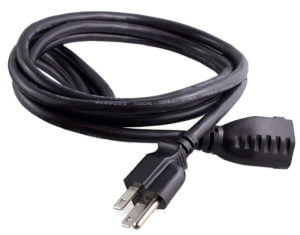Service bulletin for P1400 or P0116 on GM
10-06-04-008B Service bulletin for P1400 or P0116 on GM
GM has issued a service bulletin 10-06-04-008B to address a P1400 or P0116 on GM vehicles listed below when using an engine coolant heater. The problem occurs when outside temps are -10°F to -40°F and you’ve plugged in the engine coolant heater.
The problem is caused because the catalytic converter must warm up sufficiently to process excess hydrocarbons. One way to do that is to increase idle speed and retard timing during a cold start. So the computer commands those parameter on cold start up and then monitors this data:
Engine speed
Spark advance
Throttle position
Engine airflow
Engine coolant temperature
Engine runtime
Park/neutral position
Vehicle speed
When you use an engine coolant heater the computer can misinterpret the temperature difference between the engine coolant temperature (ECT) sensor and the intake air temperature (IAT) sensor as being outside of a specified range.
Vehicles affected by service bulletin 10-06-04-008B
2006-2007 Buick Rainier
2009 Buick LaCrosse Super, Allure Super (Canada Only);
2006-2012 Cadillac Escalade
2006-2007 Chevrolet Monte Carlo
2006-2009 Chevrolet Impala SS, TrailBlazer
2006-2012 Chevrolet Avalanche, Express, Silverado, Tahoe;
2006-2009 GMC Envoy
2006-2012 GMC Savana, Sierra, Yukon
2006-2008 Pontiac Grand Prix
2006-2009 Saab 9-7X
The above vehicles equipped with V8 Engine RPO LC9, LH6, LH8, LH9, L76, LS2, LS4, LFA, LZ1, L92, L94, L9H or L20, L96, LMF, LMG, LY2, LY5, LY6
Fix for P1400 and P0116
IF you were using the engine coolant heater when the P1400 or P0116 trouble code set, GM advises you to relocate the engine coolant temperature sensor (ECT) and the electrical cord to the engine coolant heater.
1) Remove the coolant reservoir (surge tank) cap and the pressure cap from the radiator.
2) Drain the cooling system by removing the lower radiator hose until the coolant level is below the level of the ECT.
3) Disconnect the electrical connector from the ECT and remove the ECT.
4) Locate a corresponding plug on the opposite bank of the engine and remove it. Do not discard the plug
5) Coat the threads of the ECT with sealant and install in the opposite bank. Tighten to 15-ft/lbs. Coat the thread of the plug with sealant and install where the ECT was originally located. Tighten to 15-ft/lbs.
6) Pull back the protective conduit from the ECT electrical connector and cut off the ECT pigtail.
7) Measure the wires needed to form a jumper harness between the old and new ECT sensor locations. Cut the new wires to length and insert into protective conduit, allowing room for the splices to be protected.
8) Splice the ECT connector onto one end of the jumper harness using DuraSeal weatherproof splice connectors. Splice the opposite end of the harness to the existing wires, using DuraSeal weatherproof splice connectors.
9) Reconnect the ECT connector to the ECT sensor
10) Secure the jumper harness to the existing harness using tie straps.
11) Refill the cooling system and perform a pressure test.
Relocate the engine coolant heater cord
Find a new exit point for the AC connector to leave the front of  the engine. You may need to purchase a longer extension cord. The cord must be 14/3 gauge with 15-amp capacity, chemical resistant, designed for cold outdoor environment, and also moisture, abrasion and UV resistant. Maximum length of the new cord must not exceed 10-ft.
the engine. You may need to purchase a longer extension cord. The cord must be 14/3 gauge with 15-amp capacity, chemical resistant, designed for cold outdoor environment, and also moisture, abrasion and UV resistant. Maximum length of the new cord must not exceed 10-ft.
Release enough of the clips that retain the engine coolant heater cord to the vehicle. Add dielectric grease to the electrical contacts of the heater cord receptacle and the extension cord plug. Connect the new extension cord to the engine coolant heater plug and wipe off excess dielectric grease. Wrap the connection with electrical tape.
Route the engine coolant heater cord and extension cord behind the alternator and adjacent to the engine coolant crossover pipe as shown. Continue to route the extension cored to exit location.
Secure the engine coolant heater cord and the extension cord with tie straps as needed. Resecure any of the original clips that retained the engine coolant heater cord to the vehicle that were released to provide length.
Posted on by Rick Muscoplat
